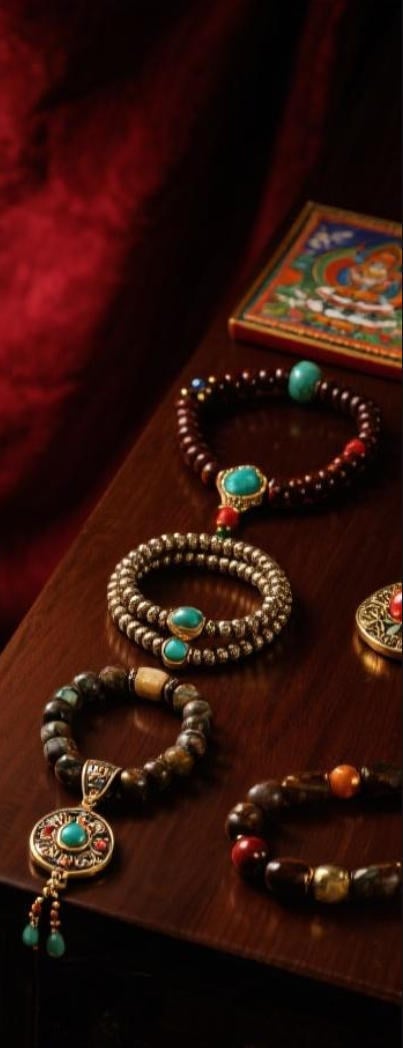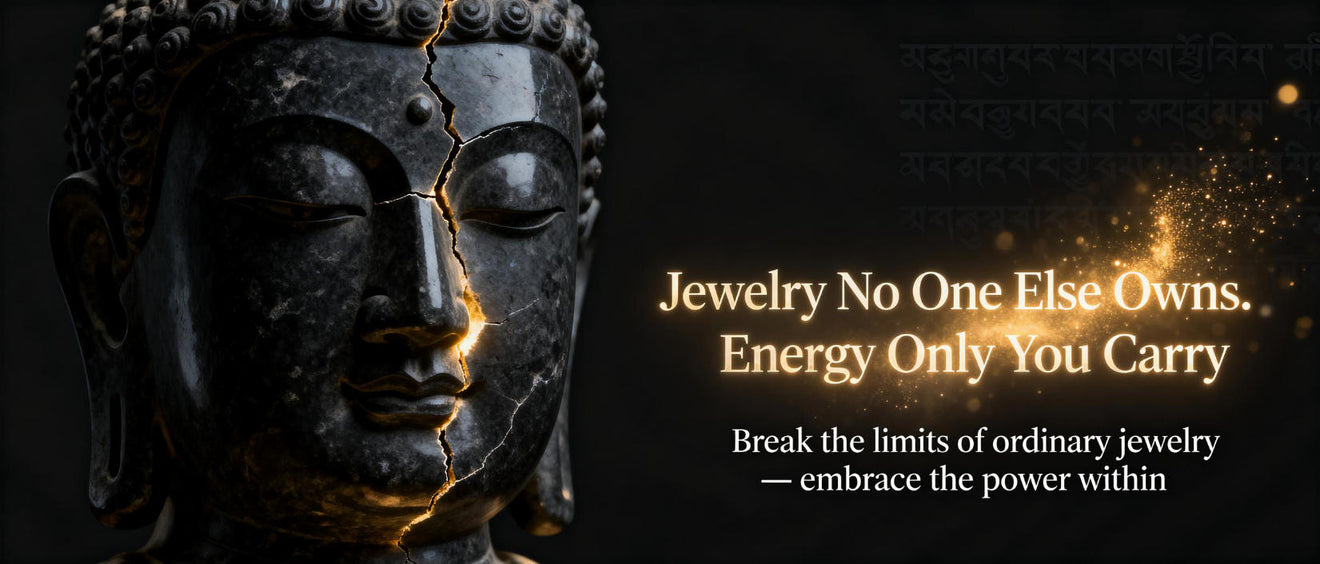
Amidst the complex pattern within Himalayan sacred teachings reside two notable emblems: the detailed thangka and symbolic bodhi ornament. Each, in its own unique way, serves as a conduit to spiritual enlightenment. The thangka, a detailed mural, displays revered icons, sacred graphics, or ancient stories, offering meditation guidance.
Alternatively, the bodhi bead, often crafted from noble stones, wood, berries, or calcium deposits, is a tangible reminder of Buddha's epiphany under the bodhi tree. Handling the beads deepens focused awareness.
- Mutually, the thangka and the bodhi bead symbolize the fusion of creativity and faith. They offer a tangible link to the primeval enlightenment of Tibetan Buddhism.
Tales Whispered by Camel Bone
Amidst long-forgotten periods, primordial treasures whisper tales pertaining to a world long departed. These are not ornate objects in forgotten empires, but elementary camel bones sculpted with characters that contain the unknowns of a bygone cycle. All elements preserve the echo arising from a life lived, a journey experienced, and a connection to the old wisdom containing which encompasses us all.
- Such objects
- Fragments
- Are
Exploring the Mystical World of Thangka Art
Tangkas are glowing paintings on canvas, meticulously crafted by Tibetan artists to depict divine figures and scenes from Buddhist scriptures. Each detail within a thangka is laden with meaning, forming a complex tapestry of visual narratives that guide the viewer on a meditative journey. The palettes used in thangkas are not merely aesthetic choices but carry deeper connotations, denoting different aspects of the Buddhist ideology. From the austere figures to the intricate motifs, thangkas offer a look into the rich world of Tibetan Buddhism, inviting us to reflect upon its knowledge.
- Conventional thangka art often depicts key Buddhist figures such as Buddha Shakyamuni, Bodhisattvas like Avalokiteshvara and Manjushri, and enlightened beings from various traditions of Tibetan Buddhism.
- Inside these representations lies a wealth of expertise that can be unlocked by those who examine the symbolic language of thangkas.
Buddha's Path to Enlightenment: Embodied in Beads and Bone
Upon the winding road to nirvana, the Buddha used symbols imbued with profound significance. All bead and piece held within them the fundamentals of his enlightenment, revealing glimpses into the unfolding of reality. By means of their design, the Buddha expressed profound realizations that exceed the realm of material perception.
From chosen prayer beads, crafted from valuable materials, radiated vibrations that synchronized with the nuanced forces within. The fragment of a sentient, meticulously transformed into amulets, served as tangible tokens of the impermanence fundamental to all existence.
Thangkas: Windows into Himalayan Spirituality
Thangkas vibrant paintings on cloth serve as influential representations of Himalayan spirituality. These intricate works of art, meticulously created with careful brushstrokes, depict a vast array consisting of Buddhist deities, mandalas, and scenes from holy scriptures. Each thangka is an invaluable tool for meditation and contemplation, offering cognition into the profound teachings of Buddhism.
- They are often used in ritual ceremonies for
- eliciting states of spiritual clarity.
- Thangkas present not merely decorative artefacts but rather gateways into the rich and intriguing world of Himalayan spiritual traditions.
The Essence of Bodhi Beads: Cultivating Mindfulness and Compassion
Each pellet on a bodhi bead mala whispers tales of ancient wisdom, guiding us on a path through the tranquil waters of mindfulness. As we seize these intricately manufactured beads, our fingers trace the contours of singular one, anchoring our consideration in the present moment. The gentle substance of the beads against our palms serves as a tangible reminder to draw breath, fostering a sense of quiet.
- For every bead that passes between our fingers, we enhance compassion, extending it first to ourselves and then outward to the world.
- Ancient traditions teaches us that mindfulness is a craft that requires patience and endurance.
Through the rhythmic repetition of mantra or simply the mindful tracking of the beads, we escape from the relentless chatter of the mind.
The practice incorporating bodhi beads is a soft invitation to reestablish our connection with ourselves and the world around us.
Spiritual Artistry: Designing Camel Bone Bracelets for Growth
Determination acts as a profound catalyst in our lives, shaping our experiences and guiding us towards our predestined way. When we combine this intention with the venerable truths of crafting a camel bone bracelet, we create a potent synergy that can propel our spiritual growth.Camel bone represents sacred significance, representing toughness. Its natural beauty and rustic charm serve as a constant reminder of the divine force within each of us.By scrutinizing each piece, pour intentions into the design. With every knot or tie, we embody our hopes, dreams, and aspirations for spiritual evolution. This act of creation becomes a meditative practice, merging us with our inner wisdom and guiding us on a road to insight.- Draw inspiration from the bone’s inherent patterns.
- Picture your goals interlaced in the bracelet’s form.
- Charge the completed bracelet under the moonlight or sunlight to amplify its energetic properties.
Camel Bone and Buddhist Symbolism: A Legacy of Meaning
In the rich tapestry inside Buddhist tradition, artifacts often hold profound symbolic meaning. Amidst these varied objects, camel bone stands out as a peculiar and intriguing element. Throughout history, this material has been used in the crafting during various Buddhist implements, each imbued with specific symbolisms.
- Regarded as a symbol of resilience and strength due to the camel's ability to persist in harsh environments, camel bone often reflects spiritual fortitude.
- Coupled with, the color and texture relative to camel bone are believed to some to hold auspicious connotations, representing purity and serenity.
Thus, camel bone has become a cherished part of Buddhist tradition, serving as a tangible connection to the profound teachings within this ancient faith.
Thangka Canvases: Chronicles of the Sacred
Within the ethereal realm of Tibetan Buddhism, Thangka paintings emerge as sacred portals to enlightenment. These stunning works, meticulously crafted by skilled artists known as thangkapa, depict a myriad featuring vibrant deities, celestial beings, and mythical creatures. Each brushstroke imparts profound spiritual significance, narrating ancient tales and philosophical notions.
- Including a vast repertoire of Buddhist iconography, Thangkas serve as both devotional objects and instructional tools. Pious practitioners gaze upon these paintings during rituals and meditations, seeking to pursue spiritual wisdom.
- Adorned with intricate details in an abundance of vibrant hues, Thangkas are considered windows into the divine. Each painting acts as a symbolic representation of the Sage's teachings and the path to liberation.
Employing their intense imagery and symbolism, Thangka paintings offer a glimpse into the rich mystical traditions of Tibet. They are a testament to the enduring mastery of Tibetan art and its profound ability to illuminate.
Embracing the Duality: Thangkas and the Cycle of Life and Death
Thangkas, radiant pictorial scrolls from Tibetan culture, embody a meaningful examination of life’s transience. Each intricate rendering depicts deities and beings engaged in the ongoing process of life and death, a symphony of birth, growth, impermanence, and revival. The artists skillfully merge these concepts within the thangka's domain, highlighting the interconnectedness of all things. Through vivid representations, they invite us to ponder on our own presence. The cycle revolves, a tempo of coming and going, stressing the preciousness of each moment. By embracing this duality, thangkas teach us to accept the beauty in both life's joys and sorrows.Lines of Commitment: The Significance of Bracelets in Buddhist Practice
In the intricate tapestry of Buddhist practice, seemingly minimalist objects often hold profound meaning. Among these are bracelets, which serve as tangible representations of devotion and commitment to the doctrine of Buddha. Worn on the wrist, a bracelet behaves as a constant reminder of one's aspirations and objectives. It can bracelet symbolize the impermanence of life, encouraging practitioners to remain centered in the present moment. Some bracelets may contain sacred drawings, such as mantras or the names of Buddhas, which are perceived to elicit positive energy and preservation. Others are sometimes made from materials with spiritual significance, like sandalwood or lotus seeds, amplifying the bracelet's meaning. Ultimately, the significance of a Buddhist bracelet exists far beyond its physical form. It becomes a powerful tool for quietude, a motivation to live in harmony with the teachings of Buddha, and a embodiment of one's unwavering belief.